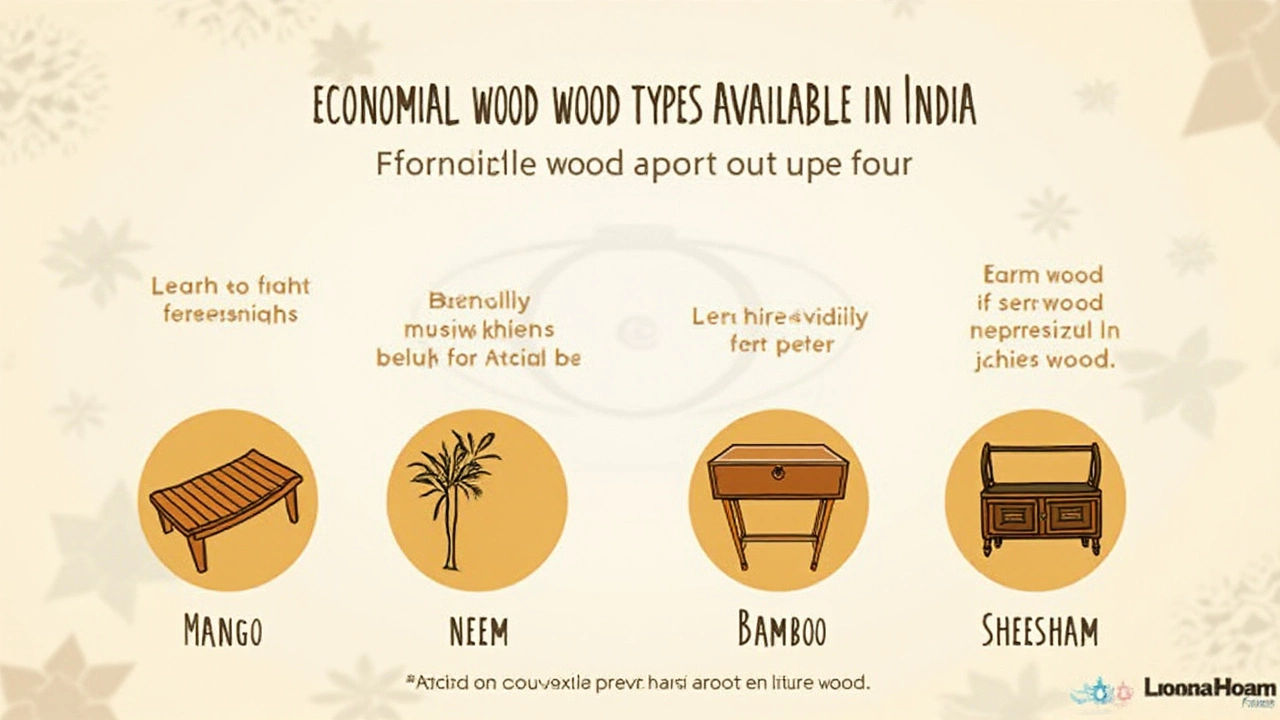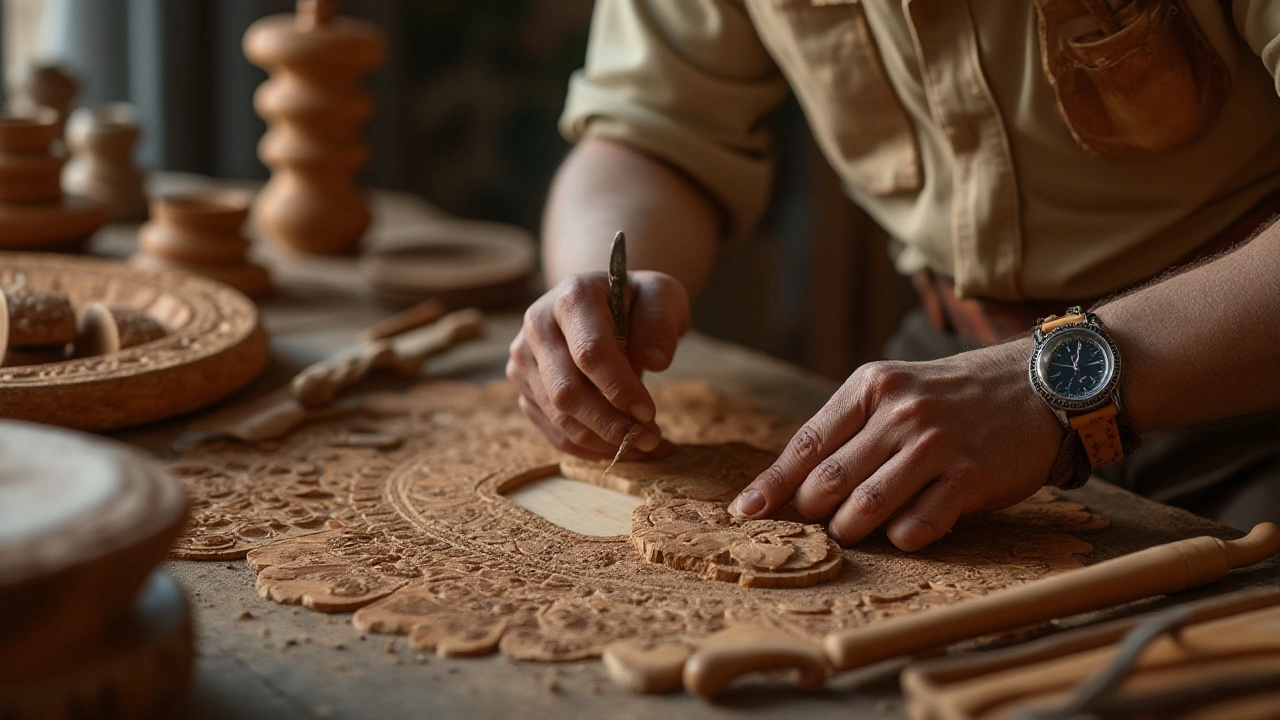In the vast landscape of Indian furniture manufacturing, selecting the right type of wood can significantly impact both cost and quality. For those seeking budget-friendly options, understanding the diverse wood varieties available is key.
India, rich in natural resources, offers a range of affordable wood types that don't compromise on durability or aesthetic appeal. Each type has its own unique properties, making it suitable for different applications. As we explore these options, this guide will provide insights into making informed choices that suit your budget without sacrificing quality.
- The Importance of Choosing the Right Wood
- Popular Cheap Wood Types in India
- Factors Affecting Wood Prices
- Tips for Choosing Cost-Effective Wood
The Importance of Choosing the Right Wood
In the pursuit of crafting remarkable furniture, the choice of wood plays a pivotal role, shaping not only the final appearance but also the longevity and functionality of the piece. Each type of wood carries its unique characteristics, impacting everything from cost to the ease of workmanship. For instance, the density of the wood can influence how easy it is to manipulate, which becomes a crucial factor for intricate designs. Softer woods, while more malleable, might wear out faster, while denser woods offer durability at the cost of added effort and expertise required in handling them. This balance between workability and resilience is something every furniture manufacturer must consider closely.
One should also consider the wood's resistance to environmental factors such as moisture and pests. Some types, like Neem, are naturally resistant to termites, making them a practical choice for areas prone to infestations. Understanding these innate properties can inform decisions that ultimately save money on maintenance and repair in the long run. Moreover, the wood's visual aspect, such as its grain and color, significantly impacts the aesthetic of the finished product, often dictating the design style. Economical woods such as Mango provide a light finish that aligns well with contemporary styles, while still being affordable. Selecting a wood type that complements the intended design and function of a piece is essential.
Another critical factor is sustainability. With growing awareness of environmental impacts, choosing affordable timber that is sustainably sourced is becoming increasingly important. Manufacturers should look for certifications or ensure that their wood is harvested responsibly to mitigate environmental harm. Not only does this practice promote sustainability, but it also enhances the brand image, appealing to eco-conscious consumers. A thoughtful approach to sourcing can set a furniture manufacturer apart in a competitive market. Investing in sustainably sourced yet cheap wood in India adds value to the products both ethically and economically.
"Wood is universally beautiful to man. It is the most humanly intimate of all materials." — Frank Lloyd WrightPracticality remains at the forefront as manufacturers weigh the cost per cubic foot against the benefits provided by each wood type. By charting out the wood's properties and cost-effectiveness, one can ensure their decision aligns with both budget constraints and aesthetic expectations. This strategic selection process is what distinguishes masterful creations from ordinary ones. So, the art of choosing the right wood is a delicate balance, mastered over time and experience, demanding a thorough understanding of its nuances.

Popular Cheap Wood Types in India
Exploring the various types of cheap wood in India can open up numerous possibilities for furniture manufacturers seeking cost efficiency without compromising quality. One of the most popular choices is Mango wood, widely used for its moderate density and appealing grain patterns. Mango wood is not only economical but is also a by-product of the fruit industry, making it an ethically sustainable choice as the trees are replanted regularly after fruiting productivity declines. Its affordability is matched by its ease of use; carpenters admire it for its pliability, which allows for intricate carving and finishing, meeting the aesthetic standards for both modern and traditional furniture pieces.
Another noteworthy wood type is Neem wood, known for its natural resistance to termites and decay, which translates into reduced maintenance costs over time. Hailing from the robust Neem tree, this wood carries a naturally dark hue and fine texture, which offers an exotic look to furniture. Despite its durability, Neem can be surprisingly affordable, primarily because these trees are abundant across various Indian states, reducing the cost of procurement and transportation. Due to its inherent medicinal properties, furniture crafted from Neem wood often holds a persuasive edge in both local and international markets.
Teak, a revered option, often faces a misconception regarding its pricing. While Burmese Teak can indeed be expensive, Indian Teak offers a more affordable alternative. It's renowned for its exceptional durability and water resistance, making it an ideal choice for outdoor furniture. A well-kept secret among many manufacturers is opting for plantation Teak, which has become more common due to its sustainable cultivation methods, balancing price with longevity and weather resistance.
Sheesham, or Indian Rosewood, deserves mention as a robust and versatile choice that competes favorably on price. Known for its interlocking grains and rich reddish-brown color, Sheesham is both long-lasting and visually appealing, fitting for both ornamental and functional pieces. Its presence in the Indian heartland ensures a stable supply chain, keeping prices competitive. Among the craftsman community, Sheesham is often heralded for its resistance to dry-wood termites and easy adaptability to inlays and veneers, making it a staple in artisanal carpentry projects.
Interestingly, a recent survey reflected that about 60% of small-scale furniture producers find that choosing local wood types like Acacia, Tamarind, and Eucalyptus can lead to significant cost savings. These woods aren't traditionally associated with furniture manufacturing on a global scale but offer high local availability and resilience. Eucalyptus, for instance, grows rapidly and is often used for its practical utility in making affordable, basic durable furniture items. Tamarind wood is valued for its density and hardness, making it a functional choice for heavier furniture that can withstand wear and tear.
This diverse selection of wood types highlights how local materials are transforming economic furniture production in India. They underscore an industry that thrives on affordability and sustainability, tapping into both traditional craftsmanship and modern competitive markets. Whether you're a furniture maker or a DIY enthusiast, understanding these options provides a solid foundation for making cost-effective decisions in the vibrant landscape of Indian timber.

Factors Affecting Wood Prices
Understanding what influences the cost of wood in India requires you to look at multiple elements that interact in a complex marketplace. A primary factor is the availability of the specific type of wood. Woods like Neem wood or Mango wood are more abundant due to the trees' natural prevalence across the country, allowing them to be priced lower than exotic varieties. Amidst India's geographical diversity, regional availability plays a huge role, as regions rich in specific types of timber tend to offer higher supply, lowering prices locally.
Import and export costs also have a significant impact on wood prices. While India produces a substantial amount of its own timber, certain types of wood are still imported. Costs related to tariffs, transportation, and regulations involved in this import process can increase the price of these woods. Conversely, wood that's exported might generate higher revenues on the international market, which can cause a rise in prices domestically due to decreased local supply.
According to a report from the Indian Plywood Industries Research & Training Institute, "The balance between export and local demand is crucial in determining wood pricing strategies."
Market Demand and Price Fluctuations
The market demand for specific affordable timber affects pricing directly. If a particular wood gains popularity due to its durability or aesthetic appeal, demand can outstrip supply, causing prices to rise until production catches up. A sudden increase in demand for eco-friendly furniture, for instance, might lead to higher prices for sustainable wood types as consumers seek guilt-free purchases. Economic conditions also sway demand; during economic downturns, there is generally a decrease in consumer spending, leading to lowered prices.Impact of Policy and Environmental Factors
Government policies and environmental regulations also shape wood prices. Restrictions on logging to preserve forests and biodiversity can lead to reduced supply. As wildfires or natural calamities affect forests, reducing timber availability, there may be consequent spikes in wood prices. On the policy end, subsidies or incentives for using certified wood can influence market dynamics by changing cost structures for manufacturers. A notable aspect to consider is how sustainable practices are becoming more essential, driving changes in both availability and pricing as new regulations take effect.Data on these factors is crucial, not just for prospective buyers, but also for furniture manufacturers aiming to strategically plan their production and sales. In recent estimates, Indian wood production was reported to be on an upward trend due to increased afforestation initiatives and sustainable management practices (Source: Forest Survey of India). Such efforts are central to ensuring that affordable options remain plentiful without compromising environmental integrity.

Tips for Choosing Cost-Effective Wood
Finding the right wood that suits your budget while meeting the needs of your project can feel like a balancing act. Many furniture makers and wood enthusiasts in India often grapple with this challenge, especially when looking for cheap wood alternatives that offer quality and durability. The first step in this selection process is understanding the characteristics of different wood types. It's crucial to identify the wood's natural features, like grain patterns, weight, moisture content, and how they affect the ease of crafting and the final look of a piece. Take into account factors like availability—which directly impacts cost—and sustainability, as using responsibly sourced wood contributes to environmental conservation. Relying on resources such as wood industry reports can provide helpful insights into market trends and availability.
Now, decision-making also involves assessing the wood's suitability for the specific kind of furniture or project you're undertaking. Hardwoods like Mango or Neem wood are widely used in India for their affordability and reliability in making sturdy furniture. Mango wood, for example, is appreciated for its robustness and attractive grain, which polishes nicely to a well-finished luster. Similarly, Neem wood, often considered because of its durability, is favored in crafting lasting pieces without breaking the bank. Considering these types of affordable timber, think about the finish you desire, the expected longevity, and the wood's exposure to environmental factors like humidity.
Another fundamental tip is to collaborate with reputable suppliers who can provide authentic and detailed information about the woods they offer. It's wise to request samples to examine firsthand before purchasing in bulk. Monitoring online wood trading platforms can also help gauge current pricing trends and find cost-effective deals. In fact, a recent survey by a leading wood industry publication found that over 60% of furniture manufacturers in India saved significantly by regularly comparing wood prices online.
A seasoned woodworker once shared, "The secret to cost efficiency lies in thoroughly understanding your resources and knowing when to innovate with substitutes where possible."Utilizing wood remnants for smaller parts of projects or mixing different types to offset costs can also be innovative strategies.
The climate in which the wood will be used is yet another aspect to consider when choosing economically feasible wood types. Moisture and temperature fluctuations can cause some woods to warp or decay faster than anticipated. Opt for woods with natural resistance to pests and fungi, especially in humid areas—this can often reduce costs long-term by minimizing maintenance and repair needs. Lastly, embrace creativity by incorporating recycled or reclaimed wood into your projects. This not only supports sustainable practices but also provides unique aesthetics, often not achievable with new timbers.
